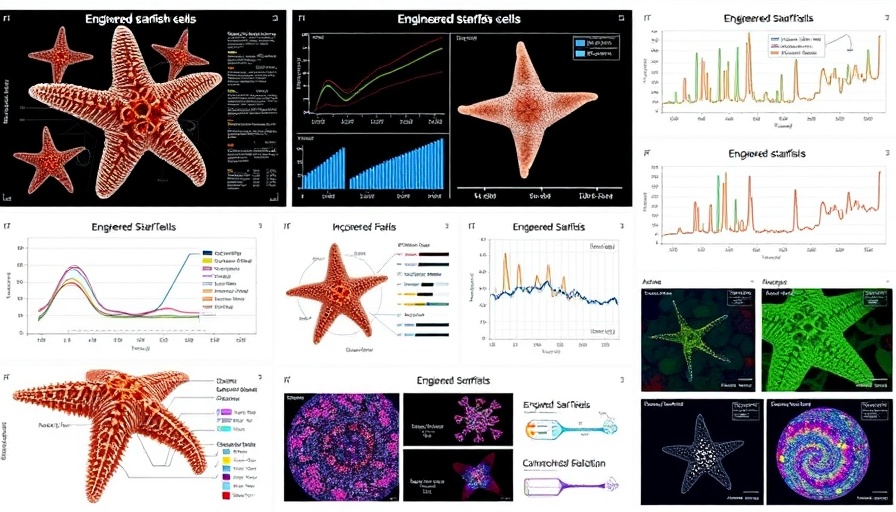
Illuminating the Future of Synthetic Biology
In a breakthrough that merges biology and technology, scientists at MIT have successfully engineered starfish cells that respond to light, allowing them to change shape dramatically during their early stages of development. This pioneering research represents a watershed moment in synthetic biology, shedding light on the potential for creating cells that can perform specific tasks based on external stimuli.
The Mechanics of Cell Transformation
Cells, including those from starfish, operate on intricate signaling pathways guided by proteins and enzymes. The MIT team focused on a particular enzyme responsible for cellular movement. By creating a light-sensitive version of this enzyme, the researchers could control starfish egg cells' movement patterns with various light stimuli. They successfully demonstrated that specific light patterns could provoke a range of responses—everything from gentle pinches to significant contractions. This precision opens doors for development in creating tailored synthetic cells that respond to light in useful ways.
How This Discovery Shapes the Future
Imagine therapeutic cells that could close wounds by contracting when stimulated by light or drug-delivering cells that only release medication upon illumination at targeted sites in the body. According to Nikta Fakhri, the lead researcher, these technologies could redefine how we approach wound healing and drug delivery. This advancement not only has profound implications for medicine but also challenges our understanding of life’s fundamental design principles.
The Science Behind the Innovation
The GitHub of cell biology meets the elegance of physics in this research. By utilizing a chemo-mechanical model, scientists can now quantitatively capture how light influences the dynamic shape of a cell. The implications are enormous—not just for healing but also for bioengineering purposes where the ability to control cellular behavior could lead to new treatments and technologies. For example, this technique could lead to advancements in personalized medicine, where treatments can be more precisely administered, tailored to the patient’s biological response to light and other stimuli.
Bridging Biology and Biotech
This monumental study enhances the intersection between biology and biotechnology. The potential for integrating biology with cutting-edge tech could allow for addressing numerous global health challenges, from treating chronic diseases to developing sustainable solutions for environmental restoration. As society becomes increasingly reliant on biotech innovations, understanding how cells can be programmed to behave in anticipated ways can result in better health outcomes and resources.
Conclusion: Redefining Our Approach to Health
This novel approach invites us to think beyond traditional biological research. As we grasp how engineered cells can reactatively shift due to light signals, we open a pathway toward innovations that make significant health impacts. To learn more and engage with these emerging technologies, consider exploring how you can apply these principles in your own life and community.
 Add Row
Add Row  Add
Add 




Write A Comment